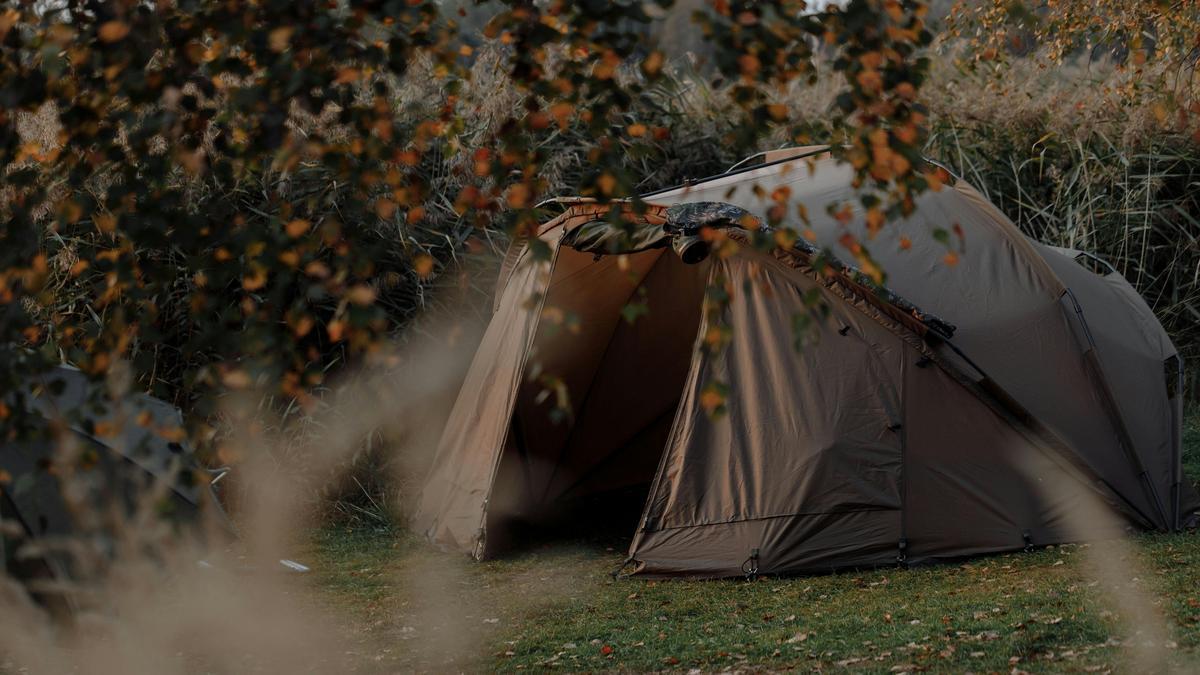If you want to master best practices for bait fishing for mullet using nets in estuaries, you’re in the right place. This article will guide you through everything you need to know. You will learn about mullet behavior, the right times to fish, and what bait works best. We’ll also cover how to use various nets effectively, ensure your safety while fishing, and prepare your catch perfectly. Get ready to improve your fishing skills and enjoy your time on the water!
Main Points
- Use fine mesh nets to catch mullet easily.
- Fish during early morning or late afternoon for better results.
- Choose calm water spots in estuaries for successful fishing.
- Check local rules about fishing nets before you start.
- Keep your bait fresh to attract more fish.

Understanding Mullet Behavior for Better Fishing
When to Fish for Mullet
Fishing for mullet can be a rewarding experience, but timing is essential. Mullet are generally more active during certain times of the day and year. Heres what you should keep in mind:
- Early Morning and Late Afternoon: Mullet tend to feed actively during these times. The water is cooler, and they come closer to the surface.
- Tides: Fishing during a rising tide can be particularly effective. Mullet often move into shallower waters to feed on algae and detritus.
- Season: Mullet are typically more abundant in warmer months. Spring and summer are ideal for catching these fish.
Best Practices for Bait Fishing for Mullet Using Nets in Estuaries
Using nets to catch mullet can be an effective method, especially in estuarine environments. Here are some best practices to follow:
Choosing the Right Net
- Cast Nets: These are ideal for catching mullet. A cast net allows you to cover a larger area and catch multiple fish at once.
- Mesh Size: Use a net with a mesh size that prevents smaller fish from slipping through while allowing mullet to be caught easily.
Bait Selection
Mullet are primarily herbivores, so the right bait is crucial. Here are some effective options:
- Cornmeal Balls: Mullet are attracted to the scent of cornmeal. You can make small balls and use them as bait.
- Bread: Simple and effective, bread can be a great bait option.
- Natural Baits: Consider using natural baits like worms or small crustaceans. These can entice mullet to your net.
Techniques for Using Nets
- Location: Target areas where mullet are known to school. Look for shallow waters near grass beds or sandbars.
- Casting Technique: When casting a net, aim for a spot where you see mullet jumping or swimming. Ensure your net spreads out wide for better coverage.
- Retrieving the Net: After casting, pull the net slowly to trap the fish. Be patient; it may take a few tries to get the hang of it.
Factors That Influence Mullet Movement
Understanding the factors that affect mullet movement can enhance your fishing experience. Here are some key elements to consider:
| Factor | Description |
|---|---|
| Water Temperature | Mullet prefer warmer waters, typically between 70°F and 85°F. |
| Salinity Levels | Mullet thrive in brackish water, so estuaries with mixed salinity are ideal. |
| Food Availability | Areas rich in algae and detritus attract mullet. Look for these feeding grounds. |
| Current | Mullet often follow currents, so fishing in areas with a moderate flow can be effective. |
Choosing the Right Bait for Mullet
Fishing for mullet can be a rewarding experience if you know how to choose the right bait. Mullet are known for their playful jumps and swift moves, making them a fun catch. Lets dive into the types of bait that attract mullet and how to prepare it for the best results.
Types of Bait That Attract Mullet
When it comes to bait, not all choices are created equal. Mullet are often drawn to natural baits that mimic their natural food sources. Here are some effective options:
- Shrimp: Fresh or frozen shrimp are a top choice. Their scent travels well in water, making them irresistible to mullet.
- Crabs: Small crabs can be a great option, especially during their molting phase when they are softer and easier to consume.
- Worms: Marine worms, especially bloodworms, can attract mullet due to their movement and scent.
- Fish scraps: Leftover pieces from previous catches can work wonders as bait. Mullet are scavengers and will often go for scraps.
- Bread balls: A simple yet effective bait. Mullet are known to feed on bread, making it a great homemade option.
How to Prepare Bait for Best Results
Preparation is key to successful fishing. Heres how you can get your bait ready:
- Freshness is Crucial: Always use the freshest bait possible. If youre using shrimp, make sure they are still alive or just thawed.
- Cutting Techniques: For fish scraps, cut them into smaller pieces to allow for easier consumption by mullet.
- Mixing Ingredients: For bread balls, mix bread with a bit of water and knead it into a dough. Form small balls that will hold together when cast into the water.
- Scent Enhancement: Consider adding scents like fish oil or garlic to your bait. This can help lure mullet from a distance.
Tips for Storing Bait Effectively
Proper storage of your bait can extend its life and effectiveness. Here are some tips:
- Keep it Cool: Store bait in a cooler with ice packs to maintain freshness.
- Seal it Tight: Use airtight containers to prevent odors from escaping. This keeps the bait fresh and attractive.
- Regular Checks: Regularly check your bait for any signs of spoilage. Discard any that doesnt look or smell right.
| Bait Type | Preparation Method | Storage Tips |
|---|---|---|
| Shrimp | Use fresh or thawed | Keep cool with ice |
| Crabs | Use soft-shelled crabs | Store in a cooler |
| Worms | Use live marine worms | Keep moist in a container |
| Fish scraps | Cut into small pieces | Seal in airtight bags |
| Bread balls | Mix and form small balls | Store in a cool place |
Best Practices for Bait Fishing for Mullet Using Nets in Estuaries
Fishing with nets in estuaries can be an effective method for catching mullet. Here are some best practices to follow:
- Choose the Right Time: Mullet are often more active during early morning or late afternoon. Plan your fishing trips around these times for better chances.
- Use the Right Net: A cast net is ideal for catching mullet. Ensure it is the right size for the area you are fishing in.
- Find the Right Spot: Look for areas where mullet are known to gather, such as near structures, shallow waters, or where theres a current. This increases your chances of a successful catch.
- Be Patient: Fishing can require a lot of waiting. Stay patient and keep your eye on the water for any signs of mullet activity.
- Stay Quiet: Mullet are skittish. Approach your fishing spot quietly to avoid spooking them.

Selecting the Best Nets for Mullet Fishing
Fishing for mullet can be a rewarding experience, but using the right nets is crucial. Lets dive into selecting the best nets to make your fishing trips successful.
Types of Nets Suitable for Mullet
When it comes to mullet fishing, you have several types of nets to consider. Each type has its strengths and weaknesses. Here are a few options:
- Cast Nets:
- Great for catching mullet in shallow waters.
- They spread out when thrown, trapping fish underneath.
- Gill Nets:
- Effective in estuaries where mullet swim.
- Fish get caught by their gills as they try to swim through.
- Seine Nets:
- Best for larger areas, like beaches or estuaries.
- You can catch multiple fish at once.
| Type of Net | Best Use | Pros | Cons |
|---|---|---|---|
| Cast Net | Shallow waters | Easy to use, portable | Requires skill to throw |
| Gill Net | Estuaries | Good for catching larger fish | Can be illegal in some areas |
| Seine Net | Larger areas | Catches many fish at once | Requires more people to use |
How to Choose the Right Size Net
Choosing the right size net is essential. If you pick a net thats too small, you might miss out on catching bigger mullet. If its too big, it can be hard to handle. Here are some tips for selecting the right size:
- Consider the Area:
- For small ponds or creeks, a smaller net (4-6 feet) is ideal.
- For larger estuaries, opt for nets that are 8-12 feet wide.
- Think About the Fish Size:
- Mullet can vary in size. A net with a mesh size of 1-2 inches is generally effective.
- Weight Matters:
- Heavier nets sink faster, making them better for deeper waters. Lighter nets are better for shallower areas.
| Area Type | Net Size | Mesh Size | Weight |
|---|---|---|---|
| Small Ponds | 4-6 feet | 1-2 inches | Light |
| Estuaries | 8-12 feet | 1-2 inches | Medium/Heavy |
Maintenance Tips for Your Fishing Nets
Keeping your nets in top shape is key to successful fishing. Here are some maintenance tips:
- Rinse After Use: Always rinse your nets with fresh water after fishing. This helps remove salt and debris.
- Dry Properly: Hang your nets to dry completely. This prevents mold and wear.
- Check for Damage: Regularly inspect your nets for tears or holes. Repair them immediately to avoid losing fish.
- Store Correctly: Store your nets in a cool, dry place. Avoid folding them tightly, as this can cause creases.
Techniques for Setting Your Nets
Best Practices for Net Placement
Fishing for mullet in estuaries can be rewarding, but it requires smart strategies for net placement. Heres how to maximize your success:
- Choose the Right Location
- Look for areas where mullet are likely to swim. Focus on:
- Shallow waters near the shoreline.
- Mouths of rivers where freshwater meets saltwater.
- Structures like rocks and fallen trees that provide cover.
- Understand Tides
- Timing your fishing with the tides can significantly impact your catch.
- Mullet often feed during incoming tides. Set your nets before the tide starts to rise.
- Monitor the tide charts to plan your trips effectively.
- Use the Right Type of Net
- A cast net is ideal for mullet. It allows you to cover a wide area quickly.
- Make sure your net has the appropriate mesh size to catch mullet without letting them escape.
- Set Your Nets at the Right Depth
- Mullet tend to swim near the surface. Adjust your nets to target this zone.
- You can also use floats on your nets to keep them at the desired depth.
Timing Your Net Deployment
Timing is everything in fishing. Heres how to get it right:
- Early Morning and Late Afternoon
- These are the best times to catch mullet as they are most active.
- Deploy your nets just before dawn or a couple of hours before sunset.
- Seasonal Considerations
- Mullet behavior changes with the seasons.
- In warmer months, they may be more abundant, so plan your fishing trips accordingly.
- Weather Conditions
- Overcast days can be excellent for fishing. Mullet feel safer and are more likely to be near the surface.
- Avoid fishing during heavy rains or storms as it can disturb their feeding patterns.
Common Mistakes to Avoid When Setting Nets
Avoiding these common pitfalls can save you time and improve your catch:
- Ignoring Local Regulations
- Always check local fishing laws. Some areas have restrictions on net size and placement.
- Respecting these rules helps protect fish populations and habitats.
- Setting Nets in Poor Locations
- Avoid placing nets in areas with heavy boat traffic or where the water is too deep.
- Stay away from polluted waters, as it can affect both your catch and health.
- Not Checking Your Nets Regularly
- Failing to check your nets can lead to lost catches.
- Make it a habit to inspect your nets every 30 minutes to ensure they are effective.
- Using Damaged Nets
- Always inspect your nets before use. A small tear can lead to lost fish.
- Repair any damage immediately to maintain their effectiveness.
- Overcrowding Your Nets
- Setting too many nets in one area can scare fish away.
- Spread your nets out to cover more ground without overcrowding.
| Best Practices | Common Mistakes |
|---|---|
| Choose the right location | Ignoring local regulations |
| Understand tides | Setting nets in poor locations |
| Use the right type of net | Not checking your nets regularly |
| Set your nets at the right depth | Using damaged nets |
| Fish during optimal times | Overcrowding your nets |

Safety Tips While Fishing in Estuaries
Understanding Estuary Conditions
Fishing in estuaries can be a rewarding experience, but understanding the conditions is crucial for your safety. Estuaries are unique environments where freshwater from rivers meets saltwater from the ocean. This blending creates a rich ecosystem, but it also means that conditions can change rapidly.
- Tides: Always check the tide schedule. High tides can flood areas, while low tides may expose mudflats. Knowing when to fish can make a big difference.
- Weather: Sudden storms can arise. Keep an eye on the sky and have a plan to seek shelter if needed.
- Currents: Be aware of strong currents, especially during tidal changes. These can sweep you off your feet if youre not careful.
Essential Safety Gear for Fishing
Having the right gear is key to staying safe while fishing. Heres a list of essential safety gear you should consider bringing along:
| Gear Item | Purpose |
|---|---|
| Life Jacket | Keeps you afloat in case of an accident |
| First Aid Kit | Treats minor injuries |
| Sunscreen | Protects your skin from harmful UV rays |
| Insect Repellent | Keeps biting insects at bay |
| Whistle | Signals for help if youre in trouble |
| Waterproof Bag | Protects your gear from water damage |
| Flashlight | Provides light during low visibility |
How to Stay Safe While Fishing
To maximize your safety while fishing, follow these practical tips:
- Stay Aware: Always be alert to your surroundings. Watch for other boats and wildlife.
- Buddy System: Whenever possible, fish with a friend. Theres safety in numbers.
- Hydration: Drink plenty of water, especially on hot days. Staying hydrated keeps you alert.
- Know the Rules: Familiarize yourself with local fishing regulations. This helps protect the environment and keeps you compliant.
- Emergency Plan: Have a plan in case of emergencies. Know how to contact help and where the nearest hospital is located.
Best Practices for Bait Fishing for Mullet Using Nets in Estuaries
Fishing for mullet using nets can be a fun and effective way to catch these fish. Here are some best practices to keep in mind:
- Choose the Right Time: Mullet are typically more active during early morning or late afternoon. Plan your fishing trips around these times for better success.
- Use the Right Bait: Mullet are known to feed on natural baits like bread or corn. You can also use artificial baits that mimic these foods. Look into effective techniques for using natural baits to enhance your catch.
- Select the Right Spot: Mullet often gather in shallower waters where they can feed on algae and detritus. Look for areas with plenty of vegetation and calm waters.
Setting Up Your Net
When it comes to using nets for mullet fishing, follow these steps:
- Choose Your Net: A cast net is the best option for catching mullet. Make sure it has a mesh size that allows small fish to pass through while trapping the mullet.
- Find a Good Location: Look for spots where mullet are known to school. This could be near river mouths or along the edges of marshes.
- Cast Your Net: Stand at the waters edge and throw the net out in a circular motion. Aim for areas where you see mullet swimming.
- Retrieve the Net: Slowly pull the net back in, keeping it submerged to avoid losing any fish.
Tips for Successful Bait Fishing
To enhance your chances of catching mullet, consider these tips:
- Be Patient: Fishing requires patience. Dont rush your casts; take your time to observe the water.
- Watch for Signs: Look for jumping mullet or ripples on the waters surface. These are signs of active fish.
- Adjust Your Technique: If youre not catching anything, try changing your bait or moving to a different location.
Cleaning and Preparing Your Catch
Steps for Cleaning Mullet Properly
Cleaning your catch is essential for maintaining its freshness and taste. Heres how to clean mullet step by step:
- Gather Your Tools: You’ll need a sharp knife, cutting board, and bucket for waste.
- Scale the Fish: Hold the mullet firmly and use the knife to scrape off the scales. Start from the tail and move towards the head.
- Remove the Guts:
- Make a cut along the belly, starting from the tail to the head.
- Carefully pull out the entrails. Be cautious not to puncture any organs.
- Rinse the Fish: Rinse the cleaned fish under cold water to remove any remaining blood and slime.
- Fillet (Optional): If you prefer fillets:
- Place the fish on its side.
- Start at the head and slice down to the backbone, following the contours of the bones.
- Repeat on the other side.
- Store Properly: Place the cleaned fish in a cooler or refrigerator until ready to cook.
Best Practices for Storing Your Catch
After cleaning your mullet, proper storage is crucial to maintain its quality. Here are some best practices:
- Refrigerate Immediately: Store the cleaned fish in the refrigerator at temperatures below 40°F (4°C).
- Use Ice: If youre not cooking right away, place the fish on ice in a cooler. This helps keep it fresh.
- Wrap Well: Use plastic wrap or aluminum foil to wrap the fish tightly. This prevents freezer burn if you decide to freeze it.
- Label and Date: If you freeze the fish, label it with the date to keep track of freshness.
| Storage Method | Temperature | Duration |
|---|---|---|
| Refrigeration | Below 40°F (4°C) | 1-2 days |
| Freezing | 0°F (-18°C) | Up to 6 months |
Cooking Tips for Mullet After Fishing
Cooking mullet can be a delightful experience. Here are some tips to enhance your dish:
- Grilling: Marinate the fish in olive oil, lemon juice, and herbs for a couple of hours before grilling. This adds flavor and keeps it moist.
- Baking: Place the fish in a baking dish, top with tomatoes, onions, and spices, and bake at 375°F (190°C) for about 20-25 minutes.
- Frying: Coat the fillets in seasoned flour or cornmeal. Fry in hot oil until golden brown for a crispy texture.
- Steaming: Steaming mullet retains its moisture. Add herbs and lemon slices for added flavor.
Quick Cooking Ideas
- Fish Tacos: Use grilled mullet, topped with cabbage and salsa.
- Fish Salad: Flake the cooked fish into a salad for a light meal.
- Fish Soup: Add the fish to a broth with vegetables for a hearty soup.
Frequently asked questions
What are the best practices for bait fishing for mullet using nets in estuaries?
Start with using a fine mesh net to catch mullet.
Choose the right time, early morning or late afternoon works best.
Make sure to use fresh bait, like bread or small fish chunks.
Keep your net still to avoid spooking the fish.
Check local rules on net usage in estuaries.
How do I choose the right type of net for mullet fishing?
Select a cast net or a seine net for estuary fishing.
Ensure the mesh size is small enough to catch mullet.
Look for durable materials that can withstand water.
Pick a size that fits your fishing area and skill level.
Avoid using nets that are too heavy to handle easily.
When is the best time to fish for mullet in estuaries?
Early morning and late afternoon are ideal.
Mullet are more active during these times.
Fish during high tide for better chances.
Watch for low light conditions; mullet are less cautious then.
Keep an eye on weather; calm days work best.
What bait works best for catch mullet using nets?
Use fresh bread, corn, or small fish scraps.
Mullet are attracted to strong smells.
Experiment with different baits to find what they prefer.
Make sure your bait is easy to find in the water.
Replace bait often to keep it fresh and appealing.
Are there specific estuary locations where mullet are more abundant?
Look for shallow areas and sandy flats.
Nearby creek mouths are great spots for mullet.
Find spots with plenty of vegetation or structure.
Observe where other anglers are having success.
Check seasonal patterns; mullet often return to the same places.

